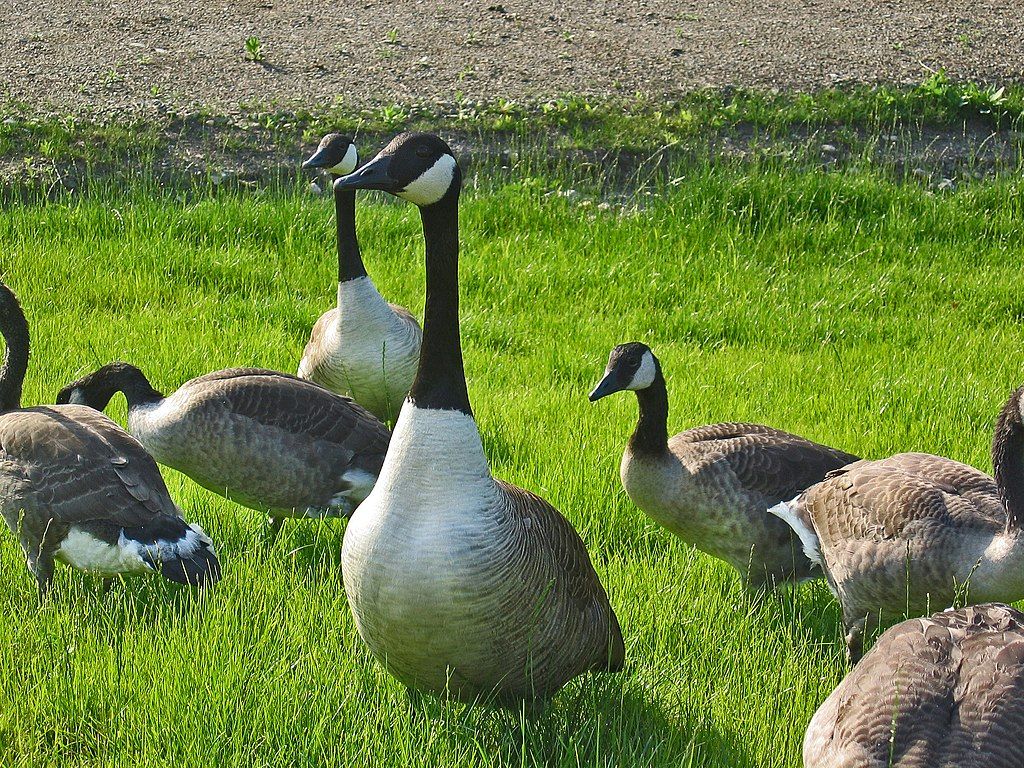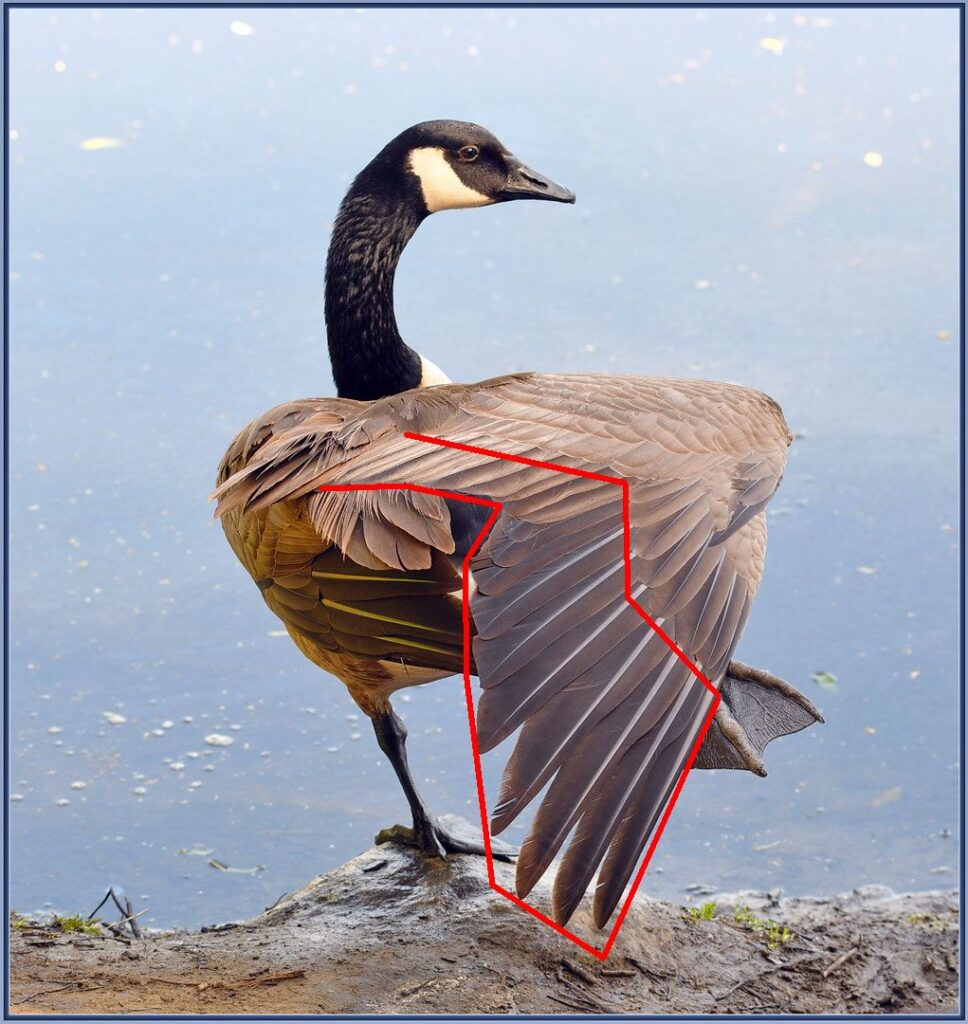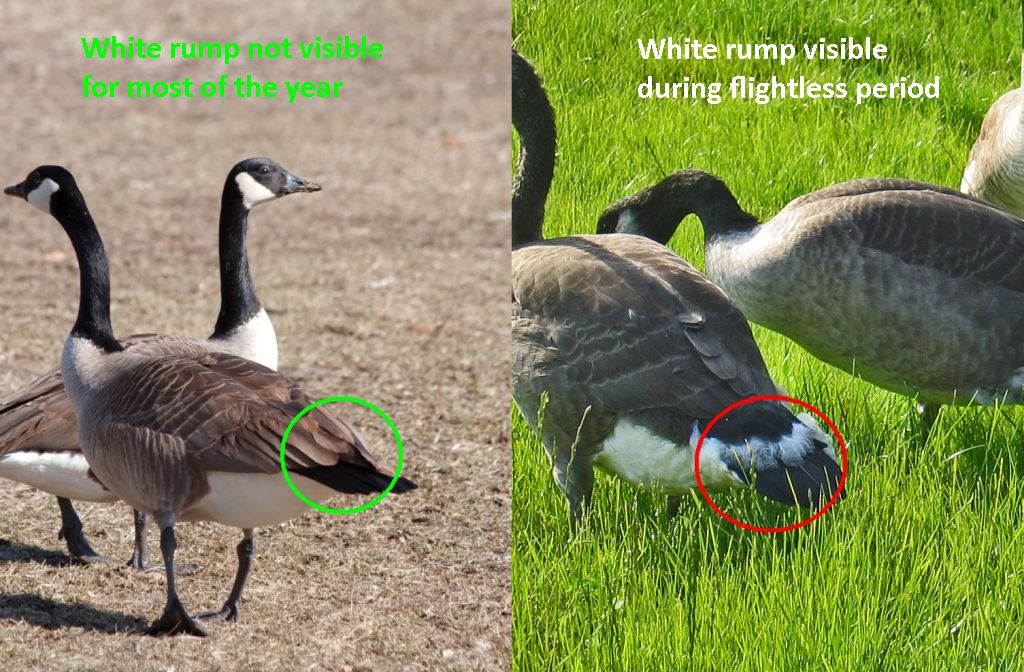
23 June 2021
Feathers wear out so birds molt to replace them. Most species molt their flight feathers one pair at a time, losing a matching feather on each side, so they can continue to fly. Not so with swans, geese and whistling ducks. They replace all their feathers shortly after the breeding season in a single annual synchronous molt. During the molt they cannot fly.
Though it seems crazy to lose the ability to fly these large heavy birds are safe on water and unsafe in flight if missing a few feathers. It works for them to lose these flight feathers all at once.

Geese rarely display their stubby wings but you can tell when they’re molting by looking at their tails. Most of the year their flight feathers cover their rumps (left). When molting (right) you can see a white rump patch.

Right now in Pittsburgh Canada geese are in their flightless period that lasts six weeks from mid-June to August. You’ll see them flock in or near large bodies of water, feeding on land and walking to the water to swim to safety. You might even notice they are absent from favorite feeding places, such as Flagstaff Hill, which don’t have bodies of water nearby. Such sites are unsafe when they cannot fly.
Have you seen any Canada geese flying lately? No. Because they can’t.
p.s. Goose mitigation plans do not harass geese during their flightless period. The best mitigation is done before they nest. For example, see the Allegheny Commons goose mitigation plan here.
(photos from Wikimedia Commons; click on the captions to see the originals)
Why are they Canada goose, not Canadian goose.
Barb, their name is their location as in
“Florida scrub-jay” instead of Floridian scrub-jay -or-
“California quail” (the State Bird) instead of Californian quail.
Canada geese that were born in Canada are literally Canadian Canada geese. Some are born in the U.S. (such as in Pennsylvania) and never leave it. These were never “Canadian” geese.
Is this the same for Mallard ducks?
Yes, mallards go through a flightless period after they are done breeding.